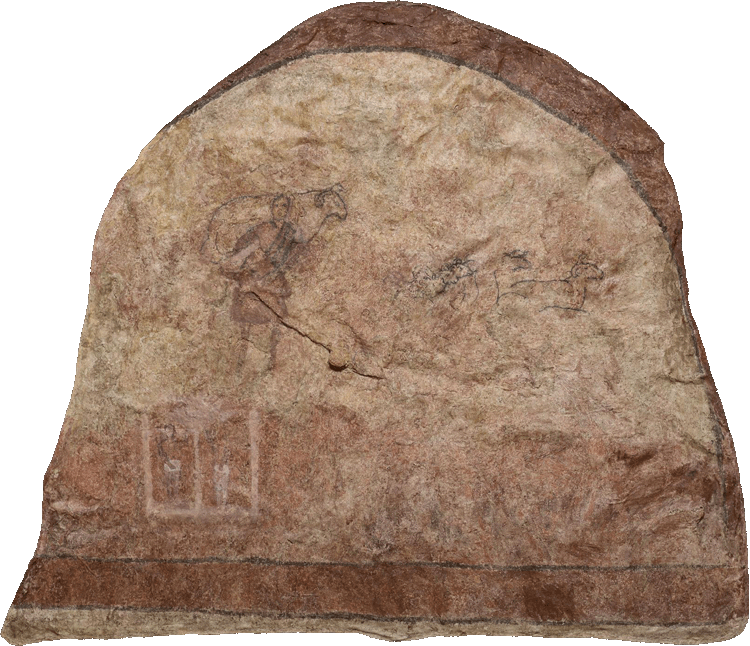The Dura-Europos Good Shepherd

Circa 250 A.D.
Wall painting
Yale University Art Gallery
This is the earliest known image of Christ as the Good Shepherd. It was painted above the baptismal pool in the church at Dura-Europos, Syria, which was rediscovered only in the 20th century.
A shepherd with a sheep on his shoulders was common in the pagan art of the period, but for Christians it referred to the many passages in scripture and commentary that envisioned Jesus as a shepherd who cares for his flock – especially Luke 15:1-7, where the shepherd finds his one lost sheep and "when he hath found it, lay[s] it upon his shoulders, rejoicing." Syrian liturgical and theological sources of this time often associate the shepherd metaphor with baptism, so this image would be particularly appropriate in a baptistery (Peppard, 99-107).
To the right of the shepherd are the faint remains of a flock of sheep. Peppard argues that when the painting is inspected closely one can see that some of the sheep are grazing and others drinking water. If so, that part of the painting would be an allusion to Psalm 23:2 (Vulgate 22:2), "He hath set me in a place of pasture. He hath brought me up, on the water of refreshment." The water would also constitute "an art-ritual transitive exchange…between the depicted water of the painting and the physical water of the font."
The two figures in the lower left were described by Clark Hopkins, the archeologist who discovered them: "two people nude except for white loincloths, picking fruit from a tree in the presence of a large serpent -- obviously Adam and Eve" (quoted in Mell, 59).
Read more about images of Christ as Shepherd.
Read more about images of Adam and Eve.
Source: this page at Wikimedia Commons.